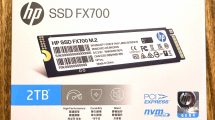Dots per Inch (DPI)
And better points per 2.54 cm for us, since we grew up with the metric system. This basically means that if you move your mouse a distance of 2.54 cm, the cursor will move X points (depending on the DPI value you set). Example: My mouse runs at 1,200 DPI by default, so my cursor “basically” moves 1,200 points at a distance of 2.54 cm. The higher the DPI value, the faster or further the cursor moves on the monitor. The reverse is true when the DPI value becomes smaller. So much for the DPI theory!
Everybody who thinks he absolutely needs a mouse with up to 16.000 DPI or even more is welcome to borrow my Sharkoon Light² 200 with the Pixart PMW3389 sensor and that one has to play CS:GO with 16.000 DPI for one hour and stream live! This should be a very fun evening. BSF
Short digression at this point: in principle always means there are exceptions! If you find this word in a letter from the authorities, you may have to pay tax arrears, for example. However, since there are exceptions, you may also be spared from the taxman. So when I use the word “basically”, it applies equally here. My goal is: to point out exactly these exceptions, because they make the difference for us PC freaks.
DPI is not always PPI!
I don’t want to dive too deep into technical details at this point, so here are just the basics so no one falls asleep on me while reading. So now let’s take the following example for simplification. A 27 inch monitor has three different resolutions. PPI, also known as pixels per inch or pixels per 2.54 cm, is basically nothing more than dots per 2.54 cm, but the size of the monitor and the resolutions make a huge difference. Why is this important to the gambler? Well? Right, muscle memory!
| 27″ monitor | ||
| Resolution | Pixel grid | PPI |
| Full-HD | 1.920 x 1.080 | 82 |
| WQHD | 2.560 x 1.440 | 109 |
| UHD | 3.840 x 2.160 | 163 |
Here we can see exactly that with increasing resolution the pixel density increases. Therefore, with increasing resolution, the image also appears much sharper, which plays a much greater role than with a TV, especially when sitting at a distance from the monitor. I’d say most sit somewhere between 50 and 100 inches from the monitor. A little tip: If you are sitting significantly less than 80 cm away from the monitor, I recommend a 24″ monitor for 1080p. I’d recommend a 27″ 1080p if the seating distance is >= 80 cm, although I have to say quite clearly here that for 27″ the first choice would be a 1440p. It’s always a question of: What do I want to spend, what do I gamble/work on, what can the graphics card do in FPS and how many Hz should the monitor have? (I’ll leave the topic of TN, VA or IPS panels aside at this point) I think that’s enough, otherwise this will be another monitor review.
Back to the mouse with its DPI vs. PPI. The dependence of the resolution is the first determining factor for the perceptible DPI setting of the mouse. Another factor is the screen size usually given in inches and now add the Windows mouse settings and the mouse sensitivity settings in the particular game. The whole in combination results in the “effective” DPI value! The topic of Windows settings, as well as the settings in the game, we’ll look at in a little more detail later. Now here’s my favorite part, because now we do a little bit of math to understand why DPI doesn’t always equal PPI.
The height and width of your respective monitor or the current resolution is known and with the Pythagorean theorem we can calculate the diagonal in pixels. If you don’t know what the famous Pythagorean theorem is, you should ask Prof. Dr. Google or Wikipedia now!
-
Full-HD: 1.920² + 1.080² = 4.852.800 à take the square root = 2.202,9 Diagonal
-
WQHD: 2,560² + 1,440² = 8,627,200 à take the square root = 2,937.2 diagonals
-
UHD: 3,840² + 2,160² = 19,411,200 à take the square root = 4,405.8 diagonals
If we now divide the respective diagonal by the 27 inches of the monitor, we get the PPI you saw in the table above. Again, what learned, but nothing for ungood! Let’s calculate 24″ full HD, then:
2.202.9 / 24″ = 91.78 PPI vs. 2,202.9 / 27″ = 81.58 PPI
Now let’s see what happens when we go with a DPI constant of the mouse to different resolutions or even inch sizes of the monitor! Change the resolution from UHD to WQHD:
1.200 DPI x 163 PPI / 109 PPI = 1,794 “effective” DPI
So when you’re gaming or cursor’n across the screen, you’ll feel that it’s somehow faster. For example, when playing CS:GO, you will suddenly have problems aiming due to muscle memory. Either adjust the DPI of your mouse or retrain your muscle memory! Change the resolution from Full HD to WQHD:
1.200 DPI x 82 PPI / 109 PPI = 902 “effective” DPI
This is where the exact opposite effect occurs, it will subjectively feel slower! With the formulas you can basically set your DPI back to the trained level, should you be forced to change the resolution. Ex: I want to hit the 144 Hz/144 FPS on the latest game, but I can’t due to older hardware, but can switch from WQHD to full HD! For the sake of completeness, here’s a look at the monitor effect. Change from 24″ to 27″ inch full HD:
1.200 DPI x 92 PPI / 82 PPI = 1,346 “effective” DPI
Brief interim conclusion
The DPI settings of your mouse are affected by the size of your monitor and the resolution you choose. So if you notice any sudden changes here, take a look at your screen resolution, maybe it’s misaligned? Or you bought a new monitor? So don’t be surprised and no your mouse has not suddenly become worse, but the error is located at a distance of about 50 to 100 cm in front of the screen! You have to adjust your DPI to the current setup. For example, if you play with 800 DPI on Full-HD, you should set your mouse to 1,067 DPI in WQHD to stay equivalent here.


































64 Antworten
Kommentar
Lade neue Kommentare
Mitglied
Mitglied
Mitglied
Urgestein
Moderator
Moderator
Veteran
Moderator
Veteran
Urgestein
Moderator
Urgestein
Moderator
Veteran
Veteran
Moderator
Moderator
Veteran
Alle Kommentare lesen unter igor´sLAB Community →